Step-by-step diagram of water temperature and time parameters of Starbucks hand-brewed coffee
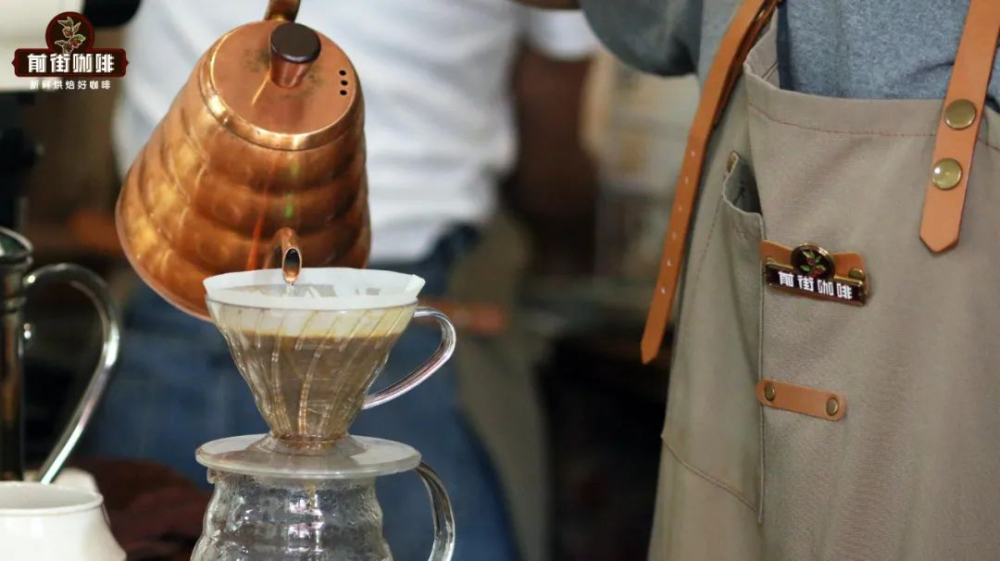
The charm of hand-brewed coffee is that you can adjust a variety of subtle parameters, adjust the extraction variables at different stages, and get the coffee you like. Qianjie believes that the ratio of powder to water is a very important parameter affecting hand-brewed coffee. Pinching the ratio of powder and water can not only make the extraction more stable, but also make the flavor show a better effect.
What is the proportion of powdered water washed by hand?
After the water comes into contact with the coffee powder in the process of hand-brewing coffee, water is used as a solvent to help dissolve the soluble flavor substances in the coffee. The powder-water ratio actually depends on how much water we use to release those flavor substances. The so-called powder-water ratio is the ratio of coffee powder to total water, which can directly affect the concentration of coffee. No matter which brewing method is used, the powder-water ratio will be determined before the front street extraction. For example, Qianjie stores generally use a single cup of 15 grams of coffee powder, 1:15 powder water ratio, that is, a total of hot water to be injected into 225ml.
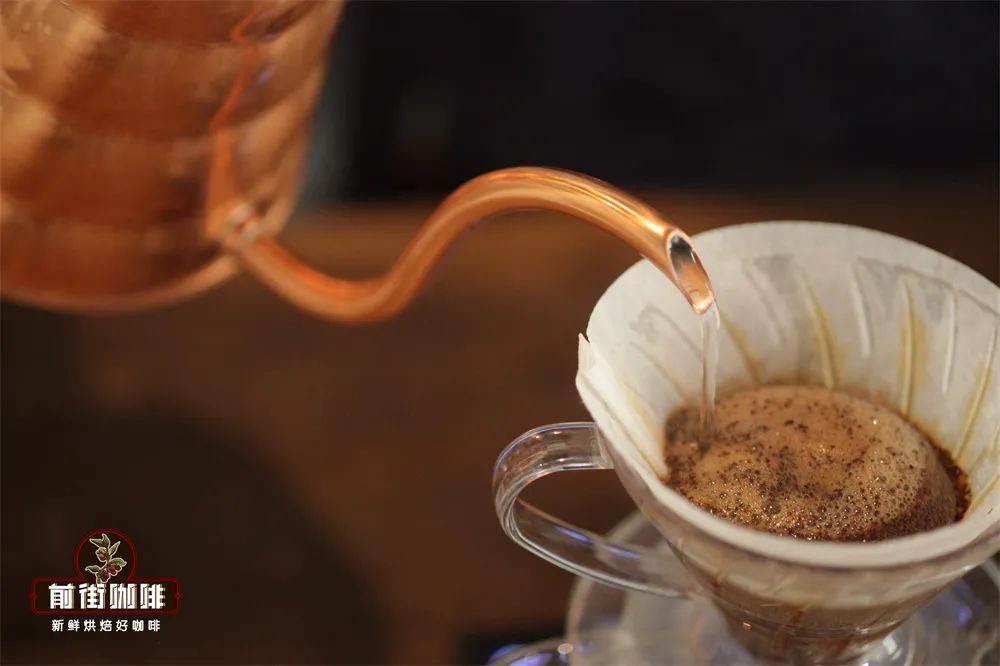
When other parameters are constant, the more water is injected, the lower the concentration of coffee is, and the more dispersed the taste is; the less water is injected, and the higher the concentration is, the thicker the flavor of coffee is. In addition, the more water is injected, the higher the extraction rate of coffee is and the more soluble substances are obtained. (the extraction rate is the proportion of the soluble matter in the coffee to the weight of the coffee powder.) the more water is injected later, the extraction efficiency will continue to decrease, and bad bitter substances will be released, thus affecting the taste of the final coffee. So we need to find the right powder-water ratio of coffee in order to adjust the best concentration and extraction rate.
How to find the best powder-water ratio?
The powder-to-water ratio is usually determined based on experience, and there is no strict fixed requirement. For example, if the front street store produces Jamaican Blue Mountain Coffee, if you want to show a balanced taste, you will use the powder-water ratio of 1:15. When producing Jade Manor sun-red standard coffee, Qianjie hopes to make the flavor clearer and the acid brighter, so Qianjie uses 1:16 for extraction. According to the previous brewing experience in Qianjie, it is recommended for beginners to start with the ratio of 1-15-1-18, that is, 15 grams of coffee per person corresponds to 225-270ml of water.
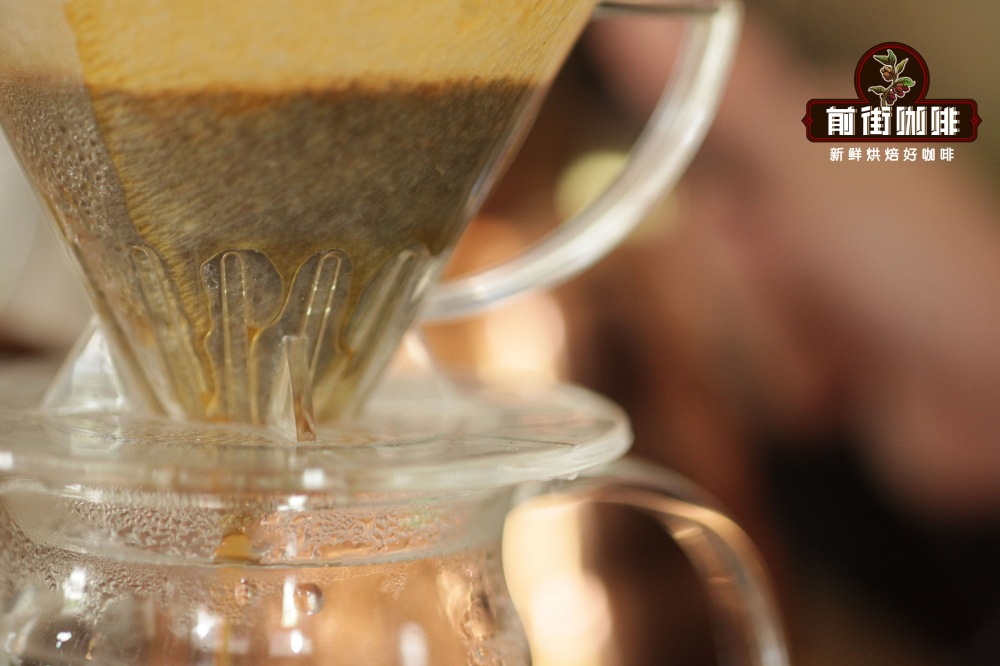
The ratio of powder to water is not the only factor that determines the flavor of coffee, so we also need to understand various parameters: extraction time, water temperature, grinding thickness, water injection method, functional properties of filter cup and filter paper, etc., will affect the final taste. If you have begun to learn the correlation between hand-flushing parameters, then fixed variables such as powder-to-water ratio and water temperature will become variables that can be adjusted up and down to make coffee tastier.
Why should water be injected in stages?
Usually we will see baristas pause and wait for the water level to drop before continuing to add water when they inject water by hand. this is called segmented extraction.
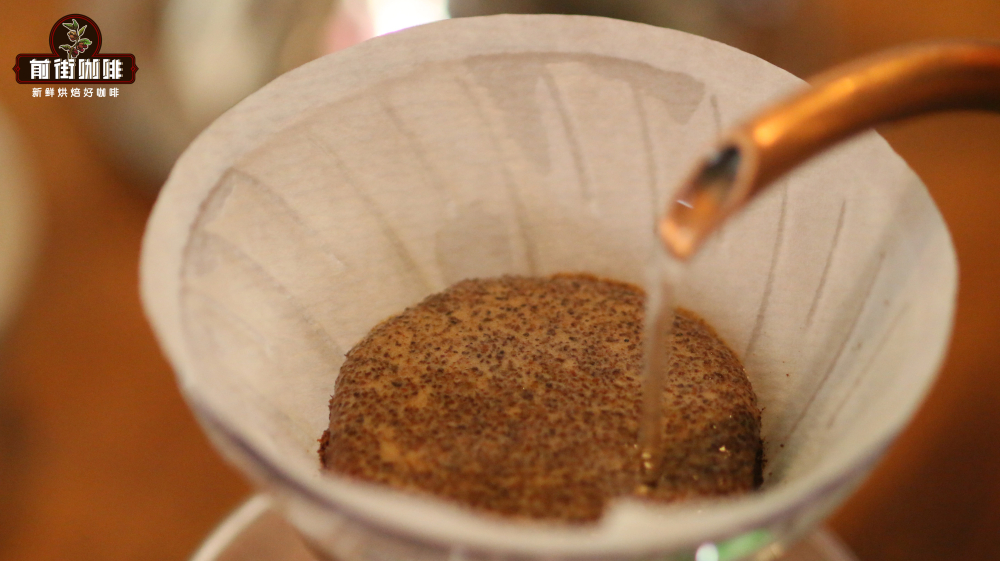
In the first stage, a small amount of hot water will be injected into the coffee powder in order to remove the internal gas and avoid affecting the extraction at the later stage. This step is called "stewing". The most common way of steaming is to steam coffee powder twice as much as coffee powder for 30 seconds. For example, 15 grams of coffee powder in Qianjie is stewed with 30ml water. This is also the "steaming formula" that beginners can easily grasp. Sectional water injection is to calculate whether there is a pause in water injection after the steaming stage. For example, if the water injection after stew is divided into two stages, then the total water injection after stew is "three-stage water injection", and so on; if the water injection after stew does not stop, but is completed in one go, it is called "one-off flow".
The reason why baristas use segmented extraction, because in the process of hand-brewing, the extraction rates of different substances in coffee are different, and the flavor released by high-temperature hot water is sour, sweet and bitter in turn. For segmented water injection extraction, except for the steaming stage, under the same powder-water ratio, the more segments are divided, the less water injection is, the more times of scouring the mixing powder layer is, and the higher the extraction rate is.

In addition, the increase of the number of stages will prolong the total extraction time, and the more coffee substances released from each stage, the richer the flavor level will be. However, Qianjie should remind everyone that the more segments, the longer the operation time, which increases the risk of being too outstanding. The macromolecules in the latter part of the coffee are more likely to be released, but the sweetness is masked. Thus it can be seen that the more sections of water injection, the better. So how should the segmented water injection be calculated?
It is suggested that the three-stage hand flushing method should be adopted.
According to previous cooking experience, Qianjie suggests beginners to use three-stage water injection. Three-stage extraction is beneficial to dissolve flavor substances more fully, increase the level of taste, and avoid excessive extraction of coffee after soaking for too long. If 15 grams of coffee powder, 1:15 powder-water ratio, 225ml total water, three stages of water is divided into: 30ml, 95ml, 100ml, the weight on the electronic scale shows: 30g, 125g, 225g.
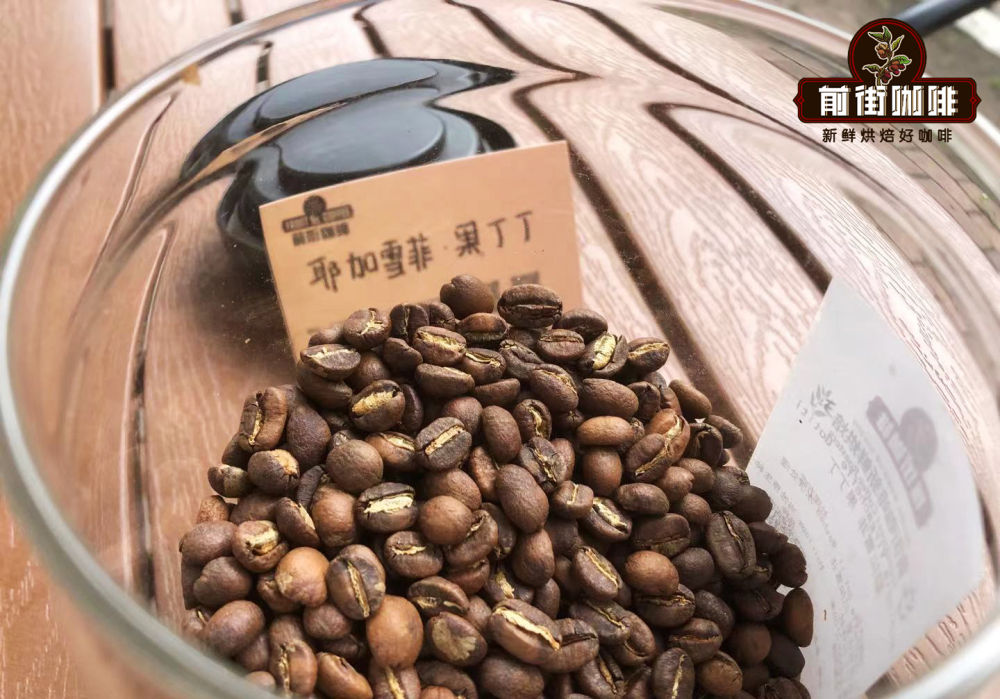
The front street here uses home-baked water to wash Yega Xuefei Ding Ding cooperative coffee beans and brew them with Hario V60 filter cup. The spiral design of the V60 allows coffee powder to exhaust better, maximizing the volatilization and dissolution of sour substances. Because Yejia Xuefei uses shallow roasting, the quality of coffee beans is hard, which requires high temperature hot water of 92 ℃-93 ℃ to stimulate the aroma of flowers and fruit in the coffee.
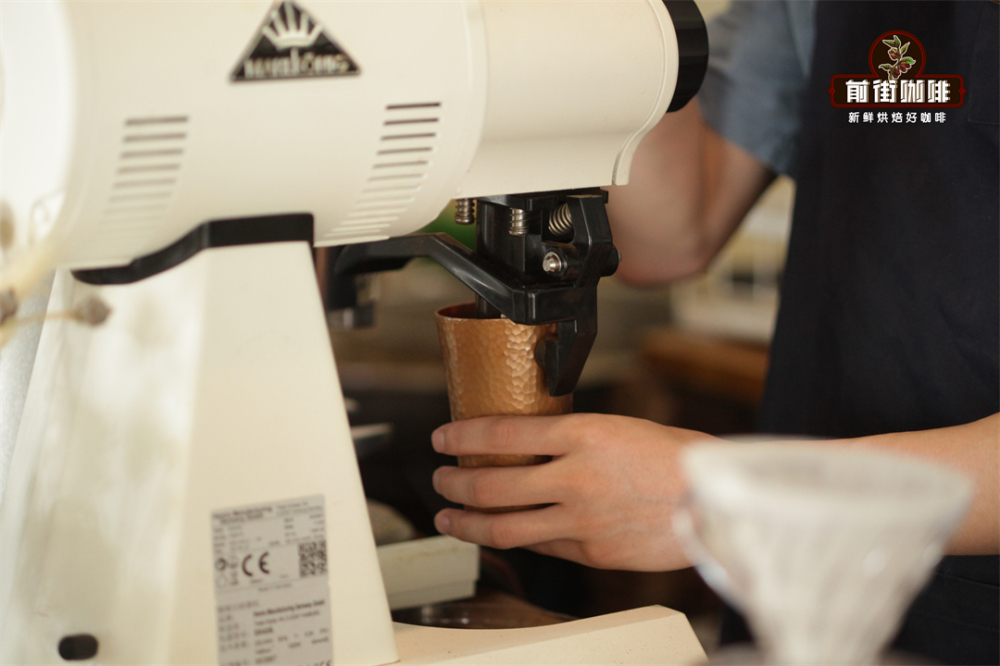
Grinding degree Qianjie recommends medium fine grinding degree (the pass rate of Chinese standard No. 20 screen is 78%), which is about the same thickness as fine sugar. Grind is too thick to extract mellow and round flavor substances, brewed coffee will appear thin; too fine particles are easy to over-extract at high water temperature, brewed coffee is prone to bitterness.
In terms of brewing ratio, Qianjie thinks that either one, 15, or 16 is OK. If you want a stronger taste, use 1:15. If you want to feel the sweetness of the flowers more clearly, you can use 1:16 to spread the flavor.
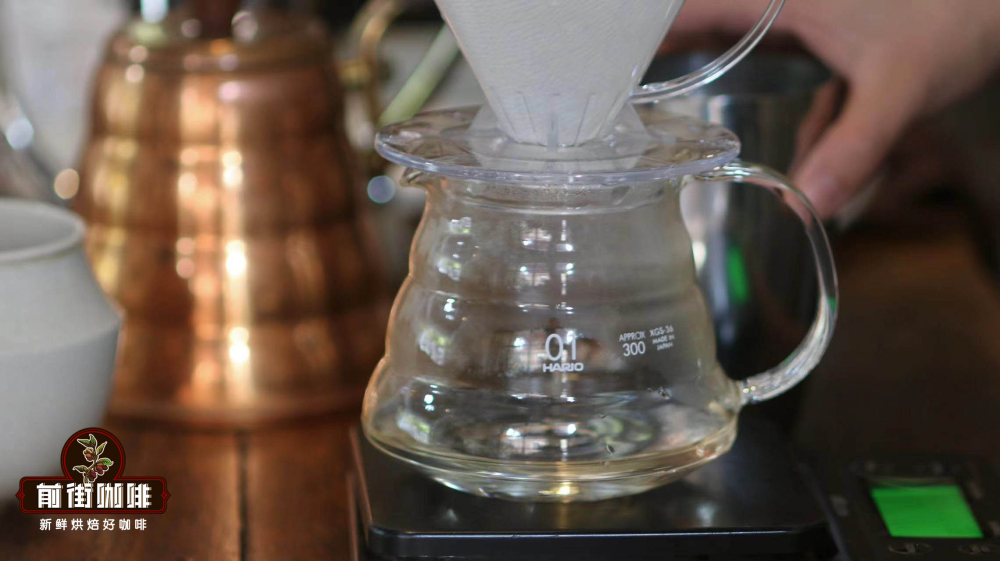
First put the folded filter paper in the filter cup, wet it with water to make it fit better with the filter cup, pour into the next pot of water, pour 15 grams of ground coffee powder into the filter cup, clear the weight of the electronic scale.
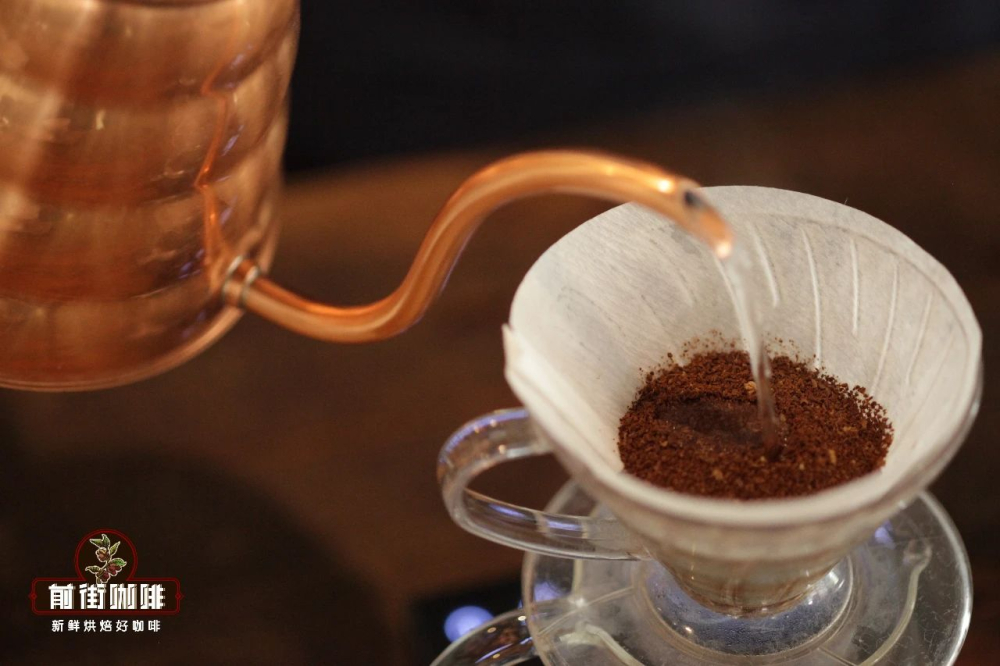
The first stage is injected with 30g water for steaming for 30 seconds, and the timing starts at the same time when the water is injected, and the injection at the center of the small flow begins to circle outward, paying attention to the need to moisten the whole powder layer.
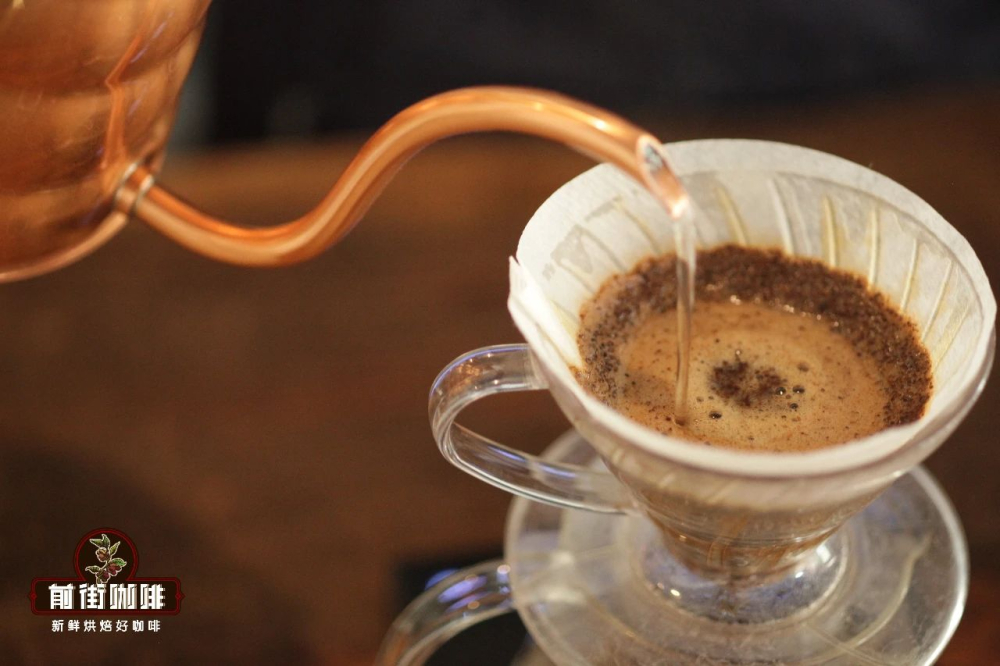
After 30 seconds, the second section of 95g water is steadily injected with a larger flow, in order to raise the entire powder layer, and the water column needs to be injected vertically and evenly. At this time, the chronograph shows 125g, which is finished in about 55 seconds.
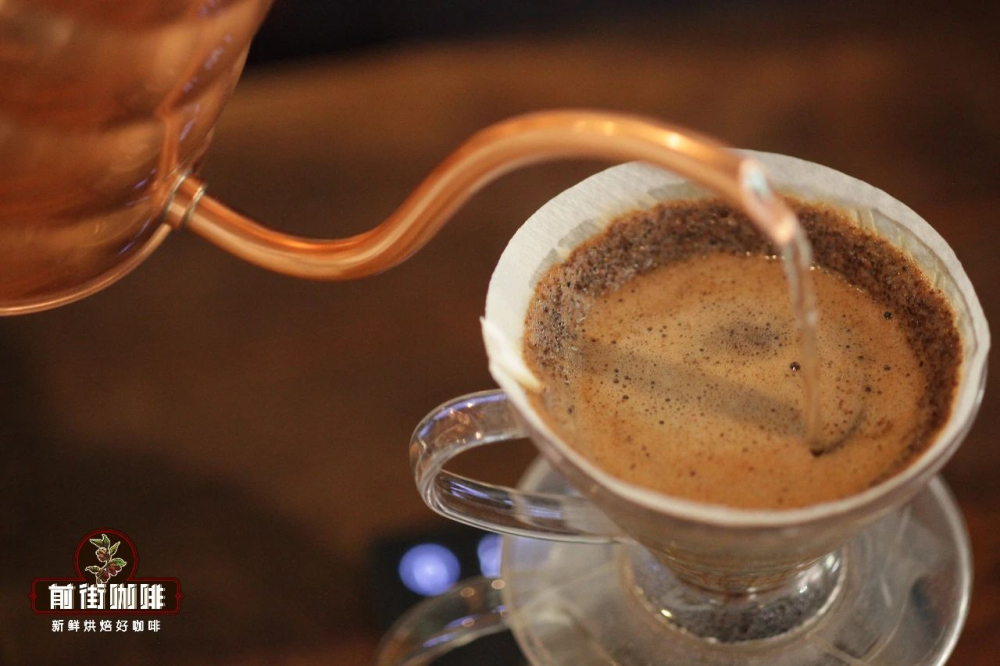
When the liquid level drops to half of the position, start to use a small flow around the small circle to inject the third section of 100g, try to control the flow is too large, easy to break up the coffee powder layer and cause insufficient extraction. The final amount of water injection is 225 grams, and the completion time of drip filtration is about 2 minutes. After removing the filter cup, shake the coffee liquid in the sharing pot and start tasting.
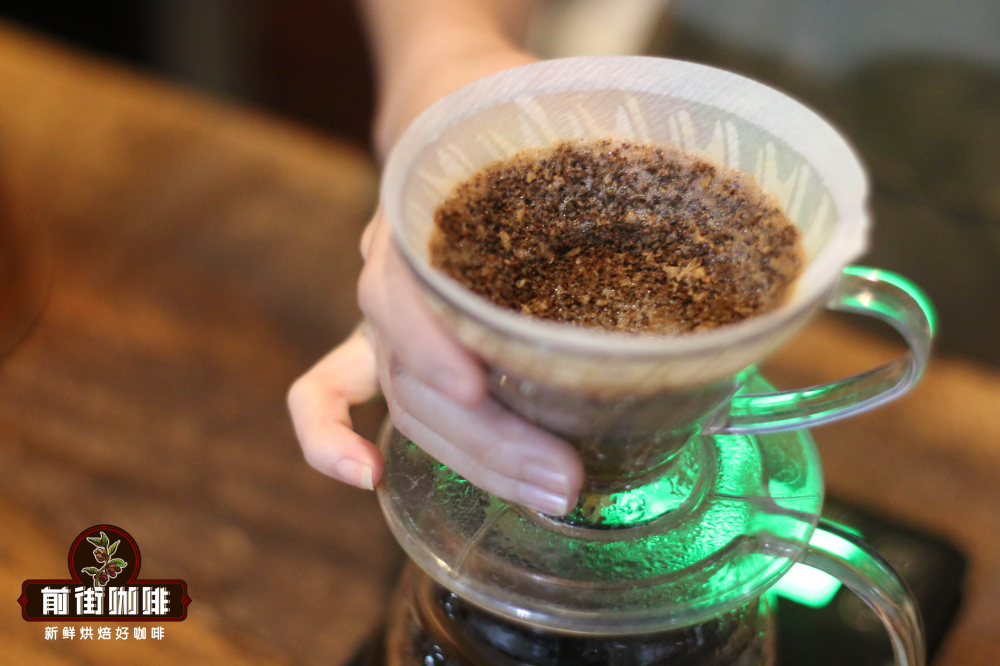
The amount of water injected into each section is not fixed, and we can regulate and control according to the understanding of coffee beans according to our accumulated hand-washing experience. Qianjie understanding of coffee brewing is a basic scientific experiment. If we want to learn hand brewing well, we need to understand the true meaning of each brewing parameter. In this way, it is easy for us to find the experimental method and establish a suitable cooking framework.
Professional coffee knowledge exchange more coffee bean information please follow the coffee workshop (Wechat official account cafe_style)
For more boutique coffee beans, please add private Qianjie coffee on Wechat. WeChat account: qjcoffeex
Important Notice :
前街咖啡 FrontStreet Coffee has moved to new addredd:
FrontStreet Coffee Address: 315,Donghua East Road,GuangZhou
Tel:020 38364473
- Prev
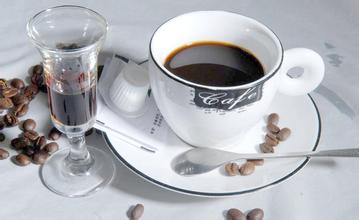
Coffee powder rough grinding scale Kilimanjaro grinding coffee powder
Coffee powder rough grinding scale Kilimanjaro grinding coffee powder if the coffee powder is too fine, it will not only extract too much, but also make the coffee liquid clog the catheter when it is refluxing. If the coffee powder is too coarse, it will make it difficult to extract aromatic substances still hidden inside the particles, unable to touch and extract with hot water, and the brewed coffee will not have enough aroma. (the Belgian pot is the same) so one
- Next
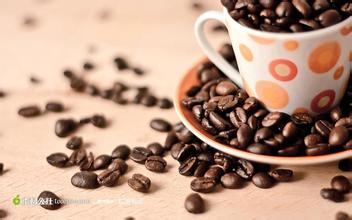
Dench Dream Coffee Bean Flavor Introduction-Latte Practice
Dench dream coffee bean flavor introduction-latte practice 1, I am also served, when I get it, it is also like this. Is it a quality library packaging problem, or a quality library delivery transportation problem. 2. The quality of the complimentary cups is not very good. There are also bulging cups. I don't like them very much. The black ones are different from the cups shown above.
Related
- Beginners will see the "Coffee pull flower" guide!
- What is the difference between ice blog purified milk and ordinary milk coffee?
- Why is the Philippines the largest producer of crops in Liberia?
- For coffee extraction, should the fine powder be retained?
- How does extracted espresso fill pressed powder? How much strength does it take to press the powder?
- How to make jasmine cold extract coffee? Is the jasmine + latte good?
- Will this little toy really make the coffee taste better? How does Lily Drip affect coffee extraction?
- Will the action of slapping the filter cup also affect coffee extraction?
- What's the difference between powder-to-water ratio and powder-to-liquid ratio?
- What is the Ethiopian local species? What does it have to do with Heirloom native species?

